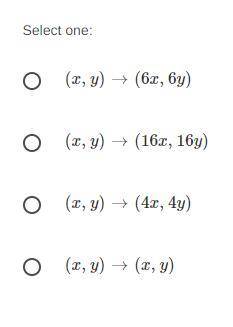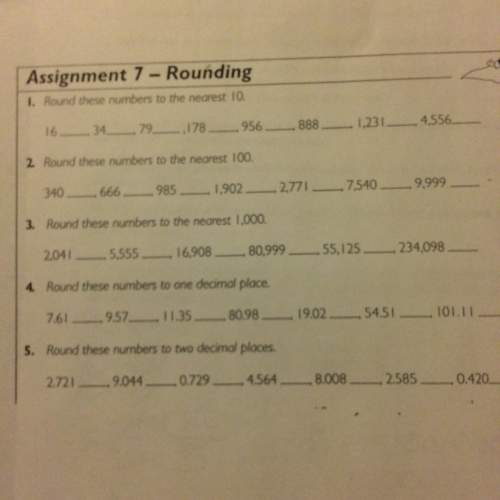
Mathematics, 05.05.2021 19:50 hernandezaniyah660
∆ABC has vertices at (1, 5), (4, 8), and (16, 12). A second triangle, ∆DEF, has vertices at (4, 20), (16, 32), and (64, 48). If the two triangles are related by a dilation factor, which of the following could be a rule for the dilation?


Answers: 1


Another question on Mathematics

Mathematics, 21.06.2019 14:20
At his new job, jeremiah can choose an hourly rate of $9 plus a $50 weekly bonus for opening the store, or an hourly rate of $10 per hour with no opening bonus. the equations model his salary options. y = 9x + 50 y = 10x
Answers: 2

Mathematics, 21.06.2019 14:30
Jack is considering a list of features and fees for denver bank. jack plans on using network atms about 4 times per month. what would be jack’s total estimated annual fees for a checking account with direct paycheck deposit, one overdraft per year, and no 2nd copies of statements?
Answers: 3


Mathematics, 21.06.2019 18:00
On a piece of paper, graph y< x+1. then determine which answer matches the graph you drew.
Answers: 2
You know the right answer?
∆ABC has vertices at (1, 5), (4, 8), and (16, 12). A second triangle, ∆DEF, has vertices at (4, 20),...
Questions










Chemistry, 03.01.2022 14:00



Spanish, 03.01.2022 14:00

Mathematics, 03.01.2022 14:00


English, 03.01.2022 14:00



Mathematics, 03.01.2022 14:00




